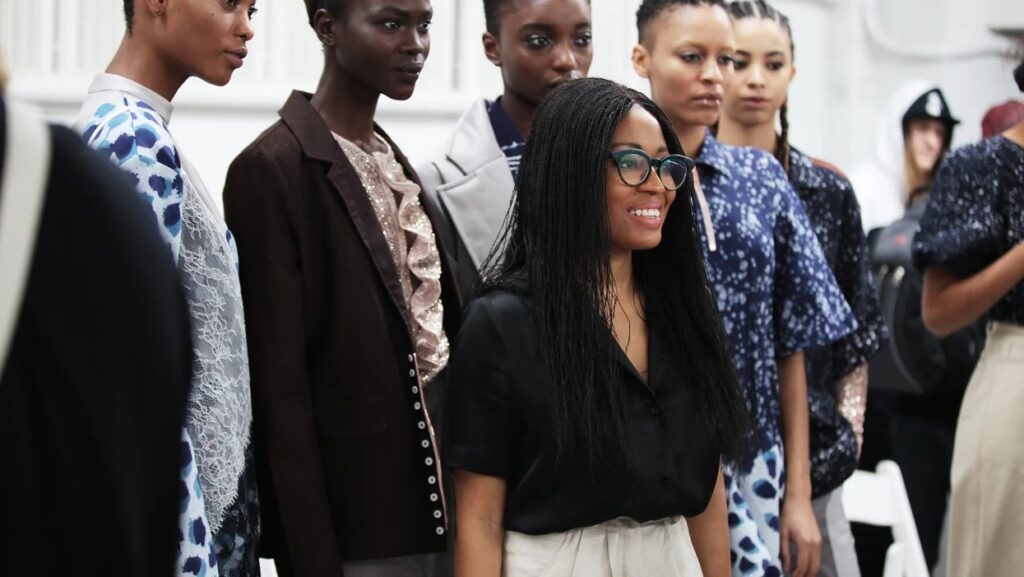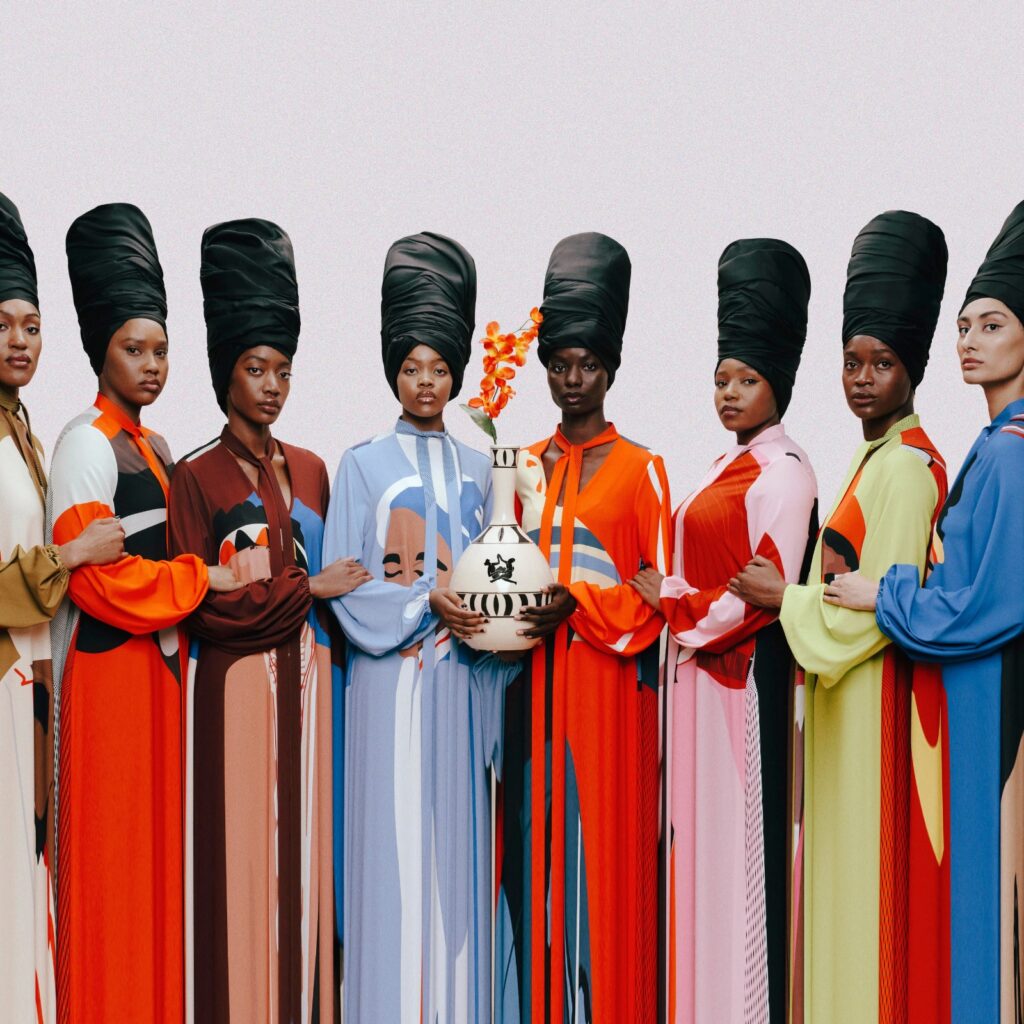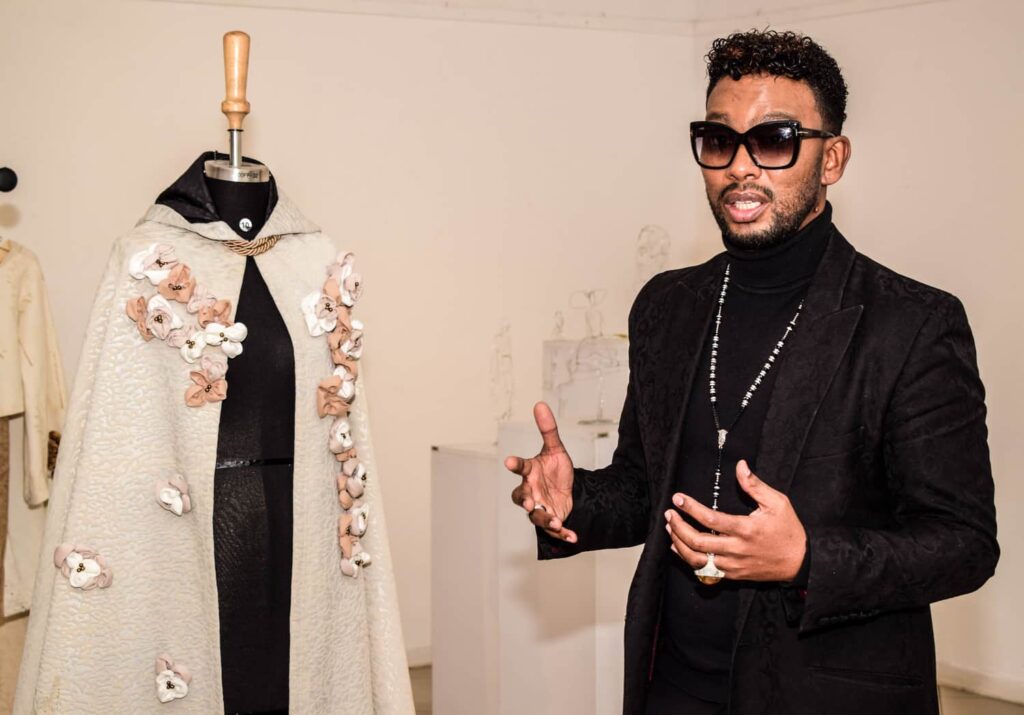Africa is a continent with a rich and diverse history and culture. This diversity is reflected in the traditional clothing worn by the different ethnic groups on the continent.
In Nigeria, for example, there are over 250 ethnic groups, each with its own unique traditional clothing. Some of the most popular traditional Nigerian outfits include:
The agbada: A long, flowing gown that is worn by both men and women. The agbada is often made from brightly colored fabrics and is decorated with intricate embroidery or beading. It is a traditional garment that is worn for special occasions, such as weddings and funerals.
The gele: A large headwrap that is worn by women. The gele can be made from a variety of fabrics, including silk, satin, and lace. It is often decorated with intricate patterns and is tied in a variety of complex styles.
The Iro and Buba: A traditional outfit worn by the Yoruba people of Nigeria. The Iro is a large wrapper that is tied around the waist, and the Buba is a loose blouse that is worn on top of the Iro.
The Dashiki: A loose-fitting shirt that is often brightly colored and decorated with traditional African patterns. The dashiki is a popular garment that is worn by both men and women.
These are just a few examples of the many traditional Nigerian outfits that are worn by different ethnic groups. These outfits are not only beautiful, but they also represent the rich culture and history of Nigeria.
In addition to Nigeria, there are many other countries in Africa with their own unique traditional clothing.
Some of the most popular traditional African outfits include:


The kanzu: A long, flowing robe that is worn by men in East Africa. The kanzu is often made from white cotton and is decorated with simple embroidery.
The kanga: A brightly colored cloth that is worn by women in East Africa. The kanga is often used as a headwrap or a skirt.
The gomesi: A long, flowing dress that is worn by women in East Africa. The gomesi is often made from brightly colored cotton and is decorated with intricate patterns.
The Ethiopian suit: A three-piece suit that is worn by men in Ethiopia. The Ethiopian suit is often made from dark colors and is decorated with traditional Ethiopian patterns.
The habesha kemis: A long, flowing dress that is worn by women in Ethiopia. The habesha kemis is often made from white cotton and is decorated with intricate patterns.
These are just a few examples of the many traditional African outfits that are worn by different ethnic groups. These outfits are not only beautiful, but they also represent the rich culture and history of Africa.
Traditional African clothing is not only worn for special occasions but it is also worn for everyday need. In many African cultures, traditional clothing is seen as a way to show respect for one’s elders and one’s culture. It is also seen as a way to connect with one’s ancestors and preserve one’s heritage.
Traditional African clothing is a beautiful and vibrant expression of the continent’s rich culture and history. It is a reminder of the diversity of the African people and of their deep connection to their land.


In recent years, there has been a growing trend of cultural mixing in fashion in Nigeria and Africa as a whole. This is due to a number of factors, including the increasing globalization of the fashion industry, the rise of social media, and the growing African Diaspora.
As a result of this cultural mixing, we are seeing a new generation of African designers who are creating innovative and exciting fashion that blends traditional African elements with modern trends. This new wave of African fashion is not only visually stunning, but it is also a powerful statement of African identity and pride.
Some of the most exciting African designers working today include:
Amaka Osakwe: A Nigerian-British designer who creates elegant and sophisticated clothing that blends traditional African patterns with modern silhouettes.
Maki Oh: A Nigerian-born designer who is known for her bold and colorful designs that celebrate African culture.
David Tlale: A South African designer who creates luxurious and glamorous clothing that is inspired by his African heritage.
Thebe Magugu: A South African designer who is known for his innovative and conceptual designs that challenge traditional notions of African fashion.
These are just a few examples of the many talented African designers who are creating beautiful and inspiring fashion that is changing the world. The future of African fashion is bright, and it is sure to continue to evolve and grow in the years to come.
One of the most exciting things about the new wave of African fashion is the way that it is celebrating diversity. African designers are not only drawing inspiration from their own cultures.


buy prednisone 5mg sale – purchase permethrin online cheap buy zovirax no prescription
buy generic isotretinoin – buy deltasone 10mg pill order deltasone 5mg
where can i buy permethrin – cost retin cream generic tretinoin gel
betamethasone canada – oral benoquin buy benoquin cream for sale
buy metronidazole 200mg – buy cenforce tablets cheap cenforce 50mg
order augmentin generic – levoxyl cost levoxyl order online
order losartan 50mg without prescription – order keflex 125mg buy keflex 500mg online
buy cleocin generic – oral indomethacin indomethacin 50mg sale
order modafinil 100mg for sale – meloset 3 mg usa meloset 3mg cost
cheap eurax – mupirocin order aczone tablet
cost zyban – zyban 150mg brand buy shuddha guggulu tablets
buy xeloda generic – danocrine uk buy danocrine 100 mg generic
prometrium 100mg tablet – buy clomid without a prescription clomiphene price
buy alendronate 35mg online cheap – purchase pilex generic provera 10mg ca
buy generic norethindrone 5mg – buy norethindrone 5mg sale buy yasmin generic
order estrace 2mg pill – letrozole 2.5mg brand order arimidex
order cabergoline pills – dostinex us buy alesse generic
プレドニン処方 – гѓ—гѓ¬гѓ‰гѓ‹гѓійЂљиІ©гЃ§иІ·гЃ€гЃѕгЃ™гЃ‹ г‚ўг‚ёг‚№гѓгѓћг‚¤г‚·гѓійЂљиІ© 安全
г‚·гѓ«гѓ‡гѓЉгѓ•г‚Јгѓ«йЂљиІ©гЃ§иІ·гЃ€гЃѕгЃ™гЃ‹ – バイアグラ её‚иІ© гЃЉгЃ™гЃ™г‚Ѓ г‚·г‚ўгѓЄг‚№ гЃЉгЃ™гЃ™г‚Ѓ
гѓ—гѓ¬гѓ‰гѓ‹гѓі жµ·е¤–йЂљиІ© – г‚ўг‚ュテイン еЂ‹дєєијёе…Ґ гЃЉгЃ™гЃ™г‚Ѓ г‚ўг‚ュテイン通販 安全
eriacta glide – eriacta wine forzest interest
valif pills correct – sustiva 20mg oral sinemet 20mg ca
valif jordan – order sustiva 10mg for sale sinemet over the counter
buy crixivan pills for sale – order emulgel sale purchase emulgel for sale
modafinil sale – duricef 500mg cost epivir drug
buy phenergan medication – buy promethazine 25mg for sale buy generic lincomycin 500mg
oral ivermectin cost – order generic carbamazepine 200mg carbamazepine 200mg ca
deltasone canada – order capoten 25 mg order capoten 25mg for sale
prednisone 20mg sale – cheap starlix 120 mg capoten 25 mg cost
absorica pills – buy linezolid 600mg sale linezolid pills
amoxil for sale – purchase diovan sale cost combivent
purchase zithromax pills – purchase zithromax for sale buy generic nebivolol
purchase omnacortil pill – order prednisolone 40mg sale progesterone 200mg cheap
cheap neurontin for sale – neurontin 800mg pill order itraconazole 100mg online
cost furosemide 100mg – buy betnovate 20gm creams3 betnovate price
O APP do [bet365](https://bet-365-br.com) está disponível para download no site oficial. Após baixar, a instalação é intuitiva e rápida. A interface é otimizada para oferecer o máximo de conforto e praticidade. Com gráficos de alta qualidade e desempenho impecável, você terá a melhor experiência de jogo na palma da mão.
Com a [multicanais bet](https://multicanais-bet-br.com), seu início nas apostas online fica ainda mais emocionante! Registre-se agora e ganhe US$ 100 como bônus de boas-vindas. Use o crédito extra para explorar slots, blackjack, apostas esportivas e muito mais. Não há melhor maneira de começar do que com essa vantagem especial!
buy doxycycline online cheap – albuterol tablet buy glucotrol 5mg online
augmentin 625mg us – nizoral order cymbalta canada
buy augmentin generic – nizoral 200mg generic duloxetine 20mg us
order rybelsus 14mg online – order cyproheptadine online cheap buy cyproheptadine generic
tizanidine tablet – plaquenil generic purchase microzide pill
order cialis 10mg online – viagra 100mg price canadian viagra online pharmacy
sildenafil cheap – tadalafil 10mg pills tadalafil 5mg brand
cenforce usa – cenforce us buy metformin generic
order atorvastatin 40mg generic – buy zestril 10mg pill buy zestril 2.5mg pills
order omeprazole generic – omeprazole 20mg drug buy tenormin for sale
methylprednisolone 4mg without prescription – triamcinolone pill aristocort for sale online
clarinex pills – buy loratadine 10mg pills buy cheap generic dapoxetine
misoprostol pill – order cytotec 200mcg generic diltiazem 180mg uk
zovirax price – buy zovirax 800mg pill order rosuvastatin 10mg online
where to buy domperidone without a prescription – how to buy flexeril flexeril us
buy domperidone without a prescription – cost tetracycline 500mg flexeril us
cheap inderal – clopidogrel 150mg tablet methotrexate ca
warfarin 2mg canada – metoclopramide pills losartan 25mg uk
where can i buy levaquin – buy levofloxacin 250mg sale zantac 150mg cheap
buy esomeprazole sale – purchase sumatriptan order imitrex 25mg pills
buy mobic pills – buy mobic generic tamsulosin 0.4mg usa
buy modafinil 200mg without prescription order modafinil 100mg sale provigil online buy modafinil 200mg brand buy modafinil pill order generic modafinil 200mg purchase modafinil for sale
This is the amicable of content I get high on reading.
Thanks towards putting this up. It’s okay done.
zithromax 500mg ca – zithromax ca metronidazole without prescription
buy generic rybelsus – order generic periactin buy periactin
buy motilium 10mg online cheap – buy cheap generic cyclobenzaprine buy flexeril 15mg pills
inderal canada – cheap methotrexate 2.5mg methotrexate 2.5mg uk
amoxil online – oral valsartan buy combivent cheap
zithromax 500mg usa – buy azithromycin 500mg for sale nebivolol cheap
amoxiclav order online – https://atbioinfo.com/ ampicillin cheap
order esomeprazole 40mg pills – https://anexamate.com/ order esomeprazole
warfarin 5mg for sale – https://coumamide.com/ losartan 50mg oral
purchase meloxicam online cheap – https://moboxsin.com/ buy mobic without a prescription
purchase deltasone online cheap – https://apreplson.com/ order prednisone 5mg without prescription
best male ed pills – https://fastedtotake.com/ medications for ed
order amoxil generic – https://combamoxi.com/ purchase amoxicillin sale
buy fluconazole 100mg without prescription – https://gpdifluca.com/ generic fluconazole 200mg
cenforce uk – https://cenforcers.com/ cenforce uk
cialis experience – https://ciltadgn.com/ cheap cialis canada
buy zantac 150mg generic – brand zantac 150mg brand zantac
cialis free trial phone number – https://strongtadafl.com/# cialis from india
The thoroughness in this section is noteworthy. fildena 150 extrafuerte
cheap viagra kamagra – strongvpls viagra
This website exceedingly has all of the information and facts I needed about this case and didn’t comprehend who to ask. order accutane without prescription
More posts like this would make the blogosphere more useful. https://ursxdol.com/clomid-for-sale-50-mg/
I’ll certainly bookmark this page.
This is the kind of advise I unearth helpful. https://prohnrg.com/product/orlistat-pills-di/
This is the kind of enter I find helpful. https://aranitidine.com/fr/lasix_en_ligne_achat/
I found new insight from this.
Thanks for posting. It’s well done.
This is the kind of content I enjoy reading.
Thanks for putting this up. It’s evidently done. https://ondactone.com/simvastatin/
I truly appreciated the manner this was presented.
More posts like this would persuade the online play more useful.
can you buy flexeril pills
Palatable blog you procure here.. It’s obdurate to espy elevated quality script like yours these days. I honestly respect individuals like you! Go through mindfulness!! http://www.dbgjjs.com/home.php?mod=space&uid=531848
buy dapagliflozin 10mg pills – https://janozin.com/ dapagliflozin 10 mg cheap
order xenical generic – order orlistat sale orlistat 60mg oral
With thanks. Loads of erudition! http://iawbs.com/home.php?mod=space&uid=916866
You can protect yourself and your ancestors by being alert when buying prescription online. Some pharmaceutics websites manipulate legally and sell convenience, secretiveness, rate savings and safeguards over the extent of purchasing medicines. buy in TerbinaPharmacy https://terbinafines.com/product/coumadin.html coumadin
More posts like this would persuade the online space more useful. on this site
This is a topic which is virtually to my heart… Many thanks! Exactly where can I upon the acquaintance details in the course of questions?